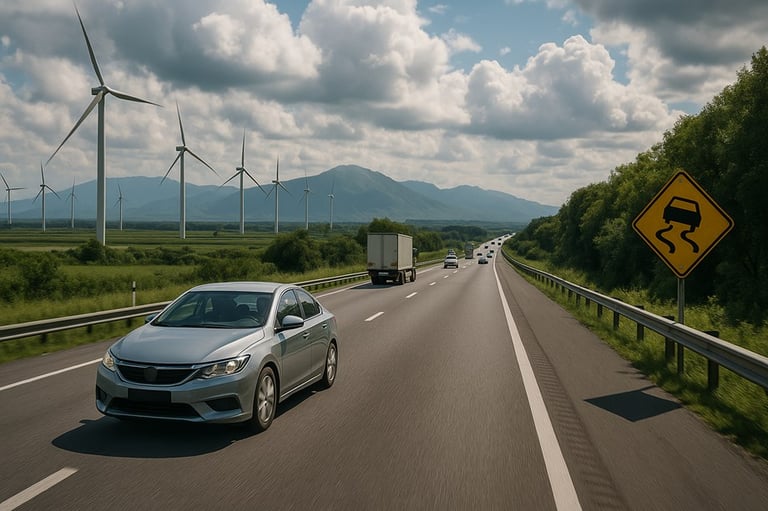Study Links Road Safety Measures to Emission Cuts: A Pathway for CAREC Region's Climate and Health Crisis
July 6, 2025
A key innovation of the study is its estimation of emissions directly caused by road crashes, including emergency response, healthcare, repairs, and traffic congestion, with traffic flow disruption being the largest contributor to crash-related emissions.
The study emphasizes the importance of integrating safety and climate policies, urging policymakers to develop smarter, greener, and safer transport systems that simultaneously address public health and climate change challenges.
The study advocates for low-cost, high-impact measures such as intersection redesign, speed limit reductions, and public transit subsidies, highlighting the importance of integrated urban planning and resilient infrastructure to achieve both safety and climate goals.
A new study utilizing an Excel-based model examines how safety measures like speed limits and pedestrian crossings can significantly reduce emissions, while also highlighting how climate actions such as promoting electric vehicles and cycling infrastructure can enhance road safety.
The CAREC region is facing a growing public health crisis, with road fatalities exceeding 12 to 17 deaths per 100,000 people and traffic injuries costing up to 5% of GDP annually, alongside rising transport-related greenhouse gas emissions.
Researchers from Ramboll and the Asian Development Bank have developed a modeling tool to evaluate the interconnected impacts of road safety measures and carbon emissions in the CAREC region, focusing on countries like Georgia, Mongolia, and Kyrgyzstan.
Despite commitments to the Paris Agreement, CAREC countries currently lack detailed policies targeting transport-sector emissions and emissions resulting from road crashes.
Model projections for 2030 suggest that implementing integrated safety and climate policies could reduce crash-related emissions by 35%, save around 200 lives in Georgia, and decrease total transport emissions by approximately 28%.
Summary based on 1 source
Get a daily email with more Science stories
Source

Devdiscourse • Jul 6, 2025
Reducing Crashes and Emissions Together: A CAREC Blueprint for Smarter Mobility | Science-Environment